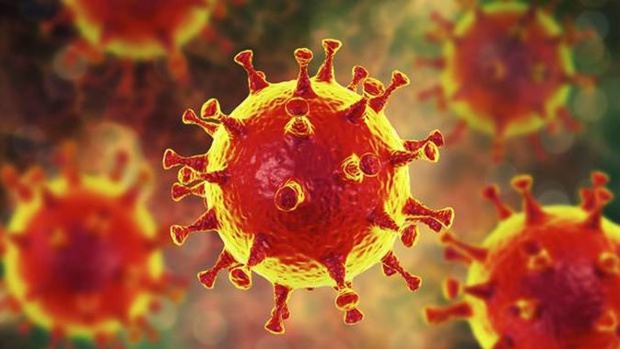Seven new Covid-19 cases in New Zealand, important guidelines for masks revealed

Photo / Getty
There are seven new Covid cases today, director of public health Caroline McElnay says.
One is in managed isolation who arrived in New Zealand from Turkey and tested positive on her day three in managed isolation
The other six cases are in the community and are linked to the cluster - five are household contacts and the other is a workplace contacted.
2455 close contacts have been identified and 2204 have been contacted.
Mt Roskill mini cluster
On the Mt Roskill church "mini cluster" there are now eight cases connected to it and all have been epidemiological links to each other - three have genomically been linked to the cluster but officials are still investigating the epidemiological link to the wider Auckland cluster.
More than 150 people connected to the cluster are staying in managed isolation.
Ten people are in hospital with Covid-19, including two people in intensive care.
There are 126 active contacts - 11 are in managed isolation. More than 9250 tests were processed yesterday.
Health Minister Chris Hipkins will also speak to the recommendations from Brian Roche's report into contact tracing.
Director general of health Ashley Bloomfield is not giving the daily briefing today as he is in Christchurch to meet with Canterbury's embattled health board and staff outraged by proposed budget cuts.
Rules for masks on public transport
Hipkins says wearing a face covering on public transport is the right thing do and will help keep New Zealanders safe from Covid-19.
From Monday it will be compulsory for everyone aged 12 and over to wear a face covering on public transport and planes under Alert Level 2 and above.
"New Zealand has had real success in taking collective action to contain and stamp out COVID-19 because we've worked as a team," Hipkins said.
"I know this is big change and will take some getting used to but it is a small thing we can all do that helps us get back to the freedoms of Level 1.
"The advice from health officials is clear – the use of face coverings can reduce the risk of people spreading COVID-19, particularly where it is hard to maintain physical distance from others. Masks and face coverings do not replace physical distancing – they complement other public health measures.
"We want to make this as easy as possible, so any form of face covering will do. If you don't have a mask you can use a scarf or bandana," he said.
"It will take time for people to adapt. Not everyone will have a face covering ready for the Monday morning commute but pretty quickly we will see face coverings become commonplace on public transport," Chris Hipkins said.
• Face coverings should be worn on public transport and aircraft. That includes trains, buses, and ferries.
They don't need to be worn:
• By children under 12
• On school buses
• On charter or group tours
• On interisland ferries
• On private flights
• By private contractors of air services such as top-dressers
In addition, face coverings do not need to be worn by:
• Passengers of small passenger vehicles, such as taxis and uber. But drivers will be required to wear masks.
• People with a disability or physical or mental health condition that makes covering their face unsuitable do not have to wear face coverings also.
• There will be other times when it is not required – such as in an emergency, if unsafe, if people need to prove their identity or to communicate with someone who is deaf, or if required by law.
Not wearing a face covering on public transport will become an offence, punishable by a $300 infringement notice or a fine of up to a $1000 imposed by the courts. Enforcement of the rules will be "light touch" - starting with engagement, encouragement and education.

Contact tracing report
A report on the progress of New Zealand's contact tracing systems says the "foundations are in place" but there remains work to do.
Sir Brian Roche led the Contact Tracing Assurance Committee report and said: "The contact tracing system is core to our level of preparedness.
"Its resourcing, leadership and ability to access high quality, accurate information with respect to the movements and contacts of individual members of the public is an ongoing challenge which must continue to be addressed," Roche said in a letter to Health Minister Chris Hipkins.
The committee was tasked with reviewing progress against the recommendations of the earlier Ayesha Verrall report.
An interim report was presented to the Ministry of Health with specific recommendations on June 12 then a final report was presented on July 16.
That found "considerable progress has been made" by the Ministry of Health to the implementation of the Verrall Report.
"New Zealand is in an increasingly strong position as a result of that effort. The Ministry is to be commended, given the multiple pressures the staff have been under."
Further optimisation was now the goal, it said.
In the view of the Committee there is an urgent need to focus on the following areas:
• Scenario planning and stress-testing of the system along with a full risk register.
• Clarity of accountabilities and decision rights within the three core interventions around border controls, testing and contact tracing require ongoing work.
• The role of technology to support contract tracing is a fundamental enabler of a high quality and responsive system.
• Fit for purpose project structure and response is a critical success factor.
• A very active cross-Government approach.
• A whole of system view.
The Ministry of Health had planned to stress-test the contact tracing system in August but the Auckland outbreak put it off and will be re-visited once the current response has been completed and reviewed.
Performance indicators for contact tracing from August 11, when the first case in the outbreak was notified, to August 21.
• 39 per cent (target is 80 per cent) of close contacts were isolated within 96 hours from time of exposure
• 37 per cent (target is 80 per cent) of close contacts were isolated within 96 hours of case's first symptoms
• 71 per cent (target is 80 per cent) of close contacts were isolated within 72 hours of test sample taken
• 48 per cent (target is 80 per cent) of cases were tested within 48 hours of first symptoms
• 74 per cent (target is 80 per cent) of positive cases were were returned within 24 hours of testing
• 98 per cent (target is 80 per cent) of cases were interviewed within 24 hours of test result
• 84 per cent (target is 80 per cent) of close contacts were isolated within 24 hours of being identified
• 85.9 per cent (target is 80 per cent) of close contacts traced within 48 hours
• 0.8 per cent (target is under 20 per cent) of close contacts with confirmed or suspected Covid-19 at the time of tracing
• 73 per cent (target is 80 per cent) of close contacts were isolated with 48 hours of a positive result.
The last measure is noted by the Ministry of Health as a key indicator, and on many days over the period of the outbreak it was above the 80 per cent target.
"The overall result for the period is affected by a relatively small number of contacts that are identified late due to the delayed identification of some exposure events."
Further uptake of the Covid Tracer app would improve performance for this measure, the ministry said.
The indicators that measure time from the first symptoms are skewed because the cases weren't diagnosed until many days after the onset of symptoms.
And others are less relevant because of cases in managed isolation or quarantine are placed there on arrival and not tested until day three and/or day 12.
Hipkins said 2368 or 2422 close contacts had been moved into isolation.
"That's a high strike rate, and while the figures vary day to day, the teams are consistently performing around the benchmark of 80 per cent of close contacts identified and contacted in 48 hours."
Hipkins said some of the key areas identified for improvement are beyond the scope of the contact tracing teams alone and are being considered separately.
"These are: clarity of accountabilities and decision rights, a fit for purpose project structure, a very active cross-Government approach, and a whole of system view.
"Overall, however, I am very encouraged by the way our contact tracing processes are working," Hipkins said.
Five people associated with the Mt Roskill Evangelical Fellowship have tested positive for Covid-19 in the past two to three days.
Bloomfield yesterday urged anyone who was at the services held at the church on Stoddard Rd on August 8, 9 and 11 and a wedding on August 7 to isolate and seek a test.
The cases are yet to be epidemiologicaly linked to the existing South Auckland cluster, but health officials were confident they would be connected.
Bloomfield yesterday: "They're like a mini-cluster at the moment".
Auckland University microbiologist Siouxsie Wiles told RNZ that genome sequencing would be crucial to scientifically prove whether it was in fact linked to the cluster.
"My concern is that if we can't find the link, that suggests there might be some other transmission chains and the question is whether we stopped those or whether once we move down to level 2 they'll continue. That's why all the testing that's happening at the moment is really, really important.
"The more sort of loose ends we see, the more concerned I am about moving out of level 3 here in Auckland."
Auckland is due to move out of level 3 and into level 2 at midnight on Sunday, but with restrictions to 10 people on gatherings. The rest of the country will remain at level 2 with a 100-person gathering limit.
"They're like a mini-cluster at the moment," Bloomfield said yesterday.
McElnay will reveal the latest testing rates, with the Government aiming for 10,000 a day.
Yesterday there were five new cases of Covid-19 - three in the community and two contained in managed isolation.
The cluster was at 108 cases, and there were nine people in hospital with Covid-19, including three in a critical condition.
This article was first published on the NZ Herald and is republished here with permission.

